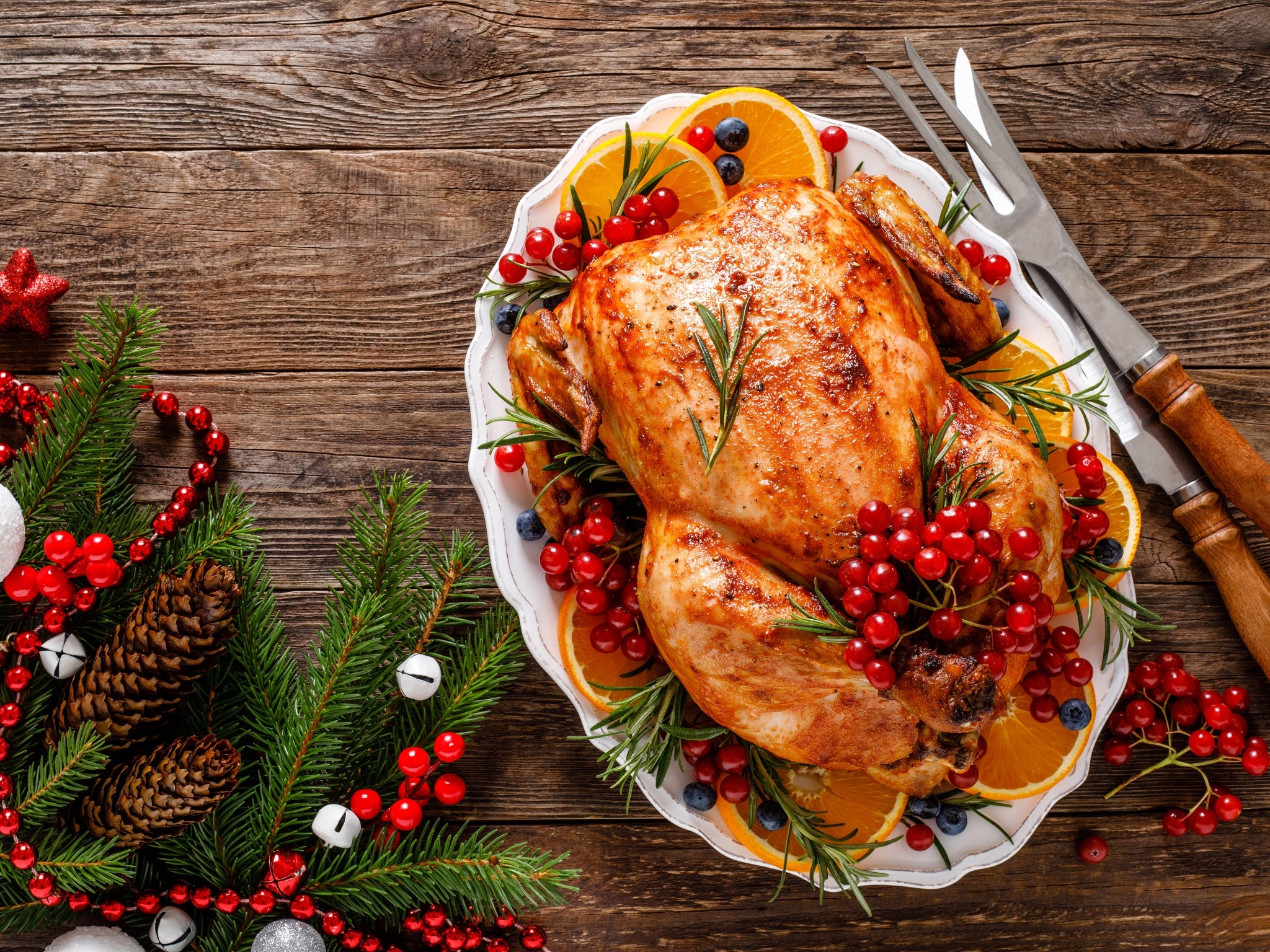How to cook the perfect turkey for Christmas
If you've never done it before, or forgotten since the last time, this guide from the Great British Chefs will ensure you won't poison anyone or burn the main event

Originally from America – where turkey remains synonymous with Thanksgiving – this big bird was incorrectly identified as guineafowl by early European settlers. We now know differently, of course, and turkey is one of the most nutritious meats to grace our dinner plates.
While turkey meat is arguably more flavourful and healthier than chicken, it hasn’t captured the British public’s taste buds in quite the same way as it has in America, where it’s very popular. But substitute turkey for chicken in any chook recipe and you won’t be disappointed: Kiev, curry, sweet and sour, escalopes, stir-fries, and burgers.
What to look for when buying turkey
Choose a free-range, organic bird if you can: The better the living conditions of the bird, the more flavourful the meat will be.
Like all poultry, store turkey in an airtight container in the fridge or freezer (for up to six months) and make sure to fully defrost before cooking.
How to cook turkey
First of all, they are ideal roasting birds if you’re cooking for a crowd, regardless of the time of year. All chefs are in agreement that, after cooking turkey, you must rest the bird for at least 20 minutes before serving, as well as basting well throughout cooking. Check that the meat is cooked using a meat thermometer.
Slow cooking is perfect for cuts such as turkey leg and thigh, which can be slow cooked to absorb flavour and tenderise to such an extent that it just falls off the bone. Braising or pot-roasting is a popular method of cooking turkey in the US. Simply brown the meat, pour over stock, then cover and bake in an oven.
The best way to roast turkey depends on personal taste – some options are: Soaking the bird in brine first (it helps the meat to retain moisture and the salt adds flavour); pre-poaching; pre-browning; steaming; or slow roasting.
One of the quickest ways to eat turkey is to pan-fry the breast, or dice or mince the meat and add to a stir-fry. Stuffing or breading the breast will add flavour and moisture.
To add more flavour before pan-frying or roasting, marinate the turkey overnight, or cut a pocket into the flesh, stuff it with herbs and butter and wrap with bacon or pancetta before baking.
Poaching or steaming delicate white meat can make it superbly tender and juicy and both processes don’t require fat, so they’re healthy ways to cook. It’s important that the water or stock remains below boiling point – too hot and it will adversely affect the texture of the meat. How long it takes depends on the cut of meat and the recipe but neither method takes as long as roasting.
What turkey goes with
Turkey is one of the more versatile meats around. Traditionally, the bird is roasted and served with a variety of vegetables and roast potatoes, Alyn Williams shows us how in his Christmas turkey recipe.
It may be celebrated during the holiday season but turkey isn’t just for Christmas; it makes an excellent alternative to the usual Sunday roast, goes well in a sandwich and, because it’s so lean, makes a healthy replacement for beef – use minced turkey in your burgers, meatballs and bolognese.
Punchy Asian flavours complement the relatively mild flavour of turkey – as with Andy Waters’ turkey larb – as do creamy or herby sauces. Turkey is also wonderful in salads, as demonstrated by Dominic Chapman’s turkey, chicory, stilton and walnut salad.
How to roast a turkey crown
A turkey crown is the body of the bird with the legs and wings removed leaving the white breast meat attached to the bones. It is an ideal joint for smaller gatherings and for those who don’t want lots of leftovers – particularly at Christmas. A crown takes less time to cook than a whole bird and it is easier to carve but essentially it can be treated in much the same way – it can rest on a bed of stuffing, be smeared with butter and draped with smoked bacon then served with roast potatoes, sprouts and cranberry sauce. In this recipe, the crown is glazed with mustard, maple syrup, orange juice and thyme but any combination of flavours that work with turkey could be used instead.
1 turkey crown1tbsp of wholegrain mustard4tbsp of maple syrup4tbsp of orange juice2tsp thyme leavessaltpepper
Pre-heat the oven to 180˚C/gas mark 4. Place the turkey crown in a roasting tray and generously brush the skin with the glaze, if using. Season with salt and pepper.
Pour chicken stock into the roasting tray to the depth of 2-3cm (approximately 500ml). Calculate the cooking time (allow 20 minutes per kg, plus 70 minutes) then place in the preheated oven, re-glazing every 20 minutes.
Remove from the oven and allow to rest for at least 10 minutes before carving.
Tips
There are so many tips and tricks for injecting flavour into your turkey and locking in that all-important moisture. Brining is a popular choice for super-tender flesh, while others like to add richness and moisture by stuffing flavoured butter under the skin. This requires carefully teasing the skin away from the meat and packing plenty of butter underneath. The butter can be flavoured with your choice of herbs – sage, thyme and rosemary are all great choices for a crowd-pleasing Christmas bird. Read more in our ultimate turkey cooking tips guide.
Stuffing a crown is a perennial favourite, so make sure you’re armed with one of our stuffing recipes for some cheffy tips on the perfect pairing.
Recipe guides courtesy of Great British Chefs. Visit their site for more turkey recipes




Join our commenting forum
Join thought-provoking conversations, follow other Independent readers and see their replies
Comments